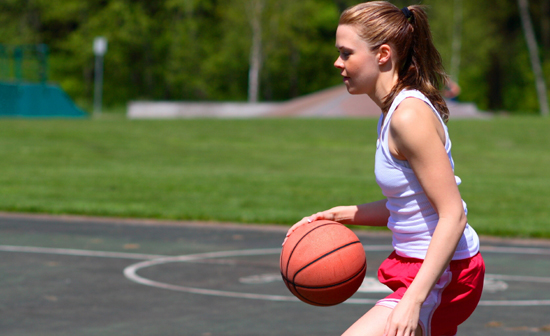Sport is a place for girls to learn social interaction, hard work, the triumphs of success and coping skills when faced with failure. However, when recreational athletics turn to intense competitive sports, burnout is too often the result. Burnout, a term often associated with CEOs and highly-demanding positions, unfortunately is now becoming a common outcome in athletes as young as ten years old. What is Burnout?
Professionals in sport psychology define burnout as, “physical/emotional exhaustion, sport devaluation, and reduced athletic accomplishment.” Simply put, burnout is when an athlete experiences overwhelming exhaustion from training and competition, resents or completely loses interest in the game, and experiences lower achievement than previously demonstrated.
Causes of Burnout
Burnout in sport can occur due to various factors. It is more easily broken down into internal factors like perfectionism, high expectations, or loss of love for sport, and external factors, which include physical exhaustion, excessive time commitments and even injury.
It is clear that athletic burnout is a current epidemic among all ages but in particular, it is highest among female athletes who exhibit maladaptive perfectionism, explained below, and those who are specializing in a single sport at a young age.
Specialization in a single sport often leads to overtraining and neglect of proper rest. Younger athletes are expected to train like professionals in order to lockdown a college scholarship. In reality, this type of training is counterproductive as continually physically over-exerting oneself has negative consequences on the athlete’s mentality.
Maladaptive perfectionism refers to the rigid standards and unrealistically high expectations that one places upon herself. With the unpredictability of sport, being unable to cope with challenges or changes can lead to excessive stress and in turn, burnout.
As mentioned, both internal and external pressure can contribute to the loss of enjoyment in sport and a reduced sense of accomplishment. Attention from coaches, parents, teammates, and even social media can be both real and perceived by the athlete as daunting rather than encouraging. The athlete’s perception of stress and pressure is what matters most in the development of burnout. It is very difficult to perform your best when it feels like a chore. Unfortunately, with this type of outlook on sport at best hinders performance and at worse, leads to dropout in sport completely.
Burnout Warning Signs
Not all athletes will demonstrate symptoms the same way with some cases being very apparent and others being more difficult to pinpoint.
|
Physical Symptoms |
Behavioral Symptoms |
Emotional/Psychological Symptoms |
|
Constant fatigue (even after a full night of rest) |
Lack of enthusiasm or enjoyment from practice or competition |
Expression of the desire to quit |
|
Decreased energy level |
Inability to focus |
Decreased confidence |
|
Increased level of illness and injury |
Making excuses for bad performance |
Feeling their performance is insignificant to them or their team |
|
Inconsistent performances |
Frequent absence or resistance from practice or game |
Anger, Irritability, or Apathy |
Tips To Combat Burnout
Athletes:
• “More is better” is a fallacy.
o Action: Schedule one day off from training this week. Do something completely unrelated to sport; your brain needs a rest too!
• Change your relationship with sport.
o Action: List ten reasons why you enjoy training and performing in your sport
• Develop stress management and coping tools.
o Action: Using breathing as a tool for relaxation is invaluable. Download an app on your phone or computer that walks you through the process.
Parents:
• Keep a healthy perspective about your child’s sport. Sport is about developing the whole child not just a player.
o Action: After practice or a game, avoid speaking first to let your child start the conversation. Listen, empathize, and validate her feelings. This allows for a feeling of autonomy and helps increase confidence, motivation, and enjoyment.
• It’s not all about the outcome.
o Action: After the next game ask your children, “What went well today?” rather than “how did you play today?”
• Avoid early specialization. Although logically you may think the earlier the better, it in fact it has the opposite effect on athletes. Allowing kids to participate in various sports throughout the year enhances development and athleticism.
o Action: Try a new sport that you and your child can test out together. Have fun with it!
Coaches:
• Enthusiasm and love for the game is contagious. The previous information about burnout also applies to coaches.
o Action: Be aware of your own burnout in sport and take action in self-care when necessary.
• Make sure practices include some unpredictability. Monotony in practice can lead to burnout for both athlete and coach.
o Action: Add in a new drill that is challenging and fun but still achievable.
• Point out the good. All too often we focus on faults and not enough on success and effort.
o Action: Make clear expectations for practice and provide each athlete with individual positive feedback.
Kat Scardino, M.Ed. and Devin Markle, Co-Directors of Athlete Development at Sports Academy, are members of the WSF Digital Contribution Team.
The content provided for this article has been approved by the Women’s Sports Foundation.

